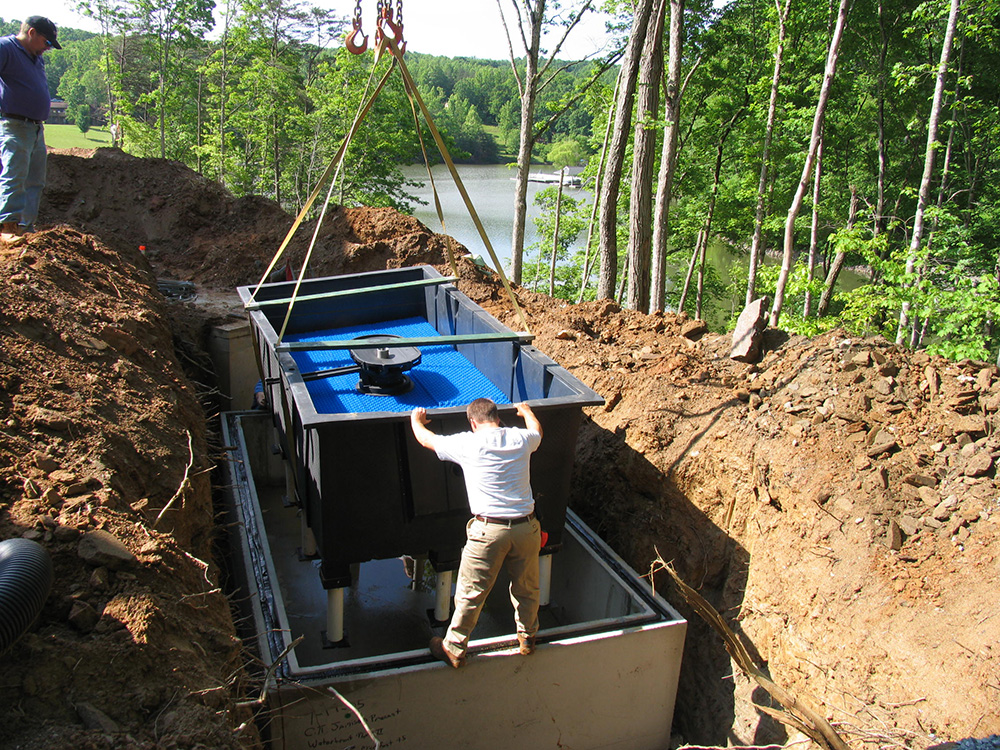Exclusive interview: H2O Global News Editor, Siôn Geschwindt, spoke with BioMicrobics President, Bob Rebori, about the value of decentralised water treatment systems and how these technologies can help build resilience in the water networks of the US, and beyond.
For the past 100 years, the US has invested primarily in centralised water treatment infrastructure.
Today, this mega-network of waste water treatment plants (WWTPs) with capacities greater than 1 million gallons per day – and mile upon mile of piping – serves over 85% of the US population.
While these systems have radically improved water management over the course of a century, they are in serious need of an overhaul.
Ageing water treatment infrastructure is resulting in skyrocketing O&M costs for utilities, excessive leakages, and heightened risk of contamination.
Furthermore, centralised water treatment systems are not always the best option, especially in remote communities. They are expensive, energy intensive, and if they fail, whole regions can be at risk.
As the adage goes – don’t put all your eggs in one basket.
One way to ease the pressure on existing centralised systems is to break up the network into smaller chunks – better known as ‘decentralisation’.
Decentralised water treatment
Decentralisation in this instance refers to the collection, treatment, and disposal or reuse of wastewater from individual homes, communities, or facilities, at or near the point of waste generation.
Whereas centralised treatment is characterised by large-scale plants that serve expansive municipal areas, decentralised systems are smaller and are located close to where the treatment is needed.
There are multiple economic, environmental and social benefits to this approach.
In many cases decentralised systems are a lower-cost alternative due to reduced infrastructure, energy, and O&M expenditure.
These systems are often ‘modular’ in nature and allow communities to increase treatment capacity as the community grows, avoiding larger up-front financing costs.
Their smaller size naturally results in less energy consumption but this is also the result of the smaller distances over which wastewater is transported, reducing the pumping needs of the facility.
Typically, states use a large portion of their energy budget just to pump water from one point to the next, sometimes over hundreds of miles. This energy use isn’t just costly, it contributes to emissions too.
And the perks don’t end there. Decentralized systems make it easier to provide water for direct potable reuse and non-potable water in both rural and urban settings for purposes such as flushing, cooling and heating, landscaping, and subsurface irrigation drip.
All of these advantages increase a community’s sustainability and resilience to drought and scarcity by diversifying water sources and reducing the use of potable water for non-potable uses.
“Decentralisation is a critical part of the paradigm shift we need to make modern, sustainable water treatment a reality,” said BioMicrobics President, Bob Rebori, from the company’s headquarters in Kansas, USA.
Enter BioMicrobics
BioMicrobics specialises in simple, robust, and affordable decentralised waste water treatment, reuse, and stormwater technologies that help lessen the load on centralised water infrastructure.
“To date we have installed over 80,000 systems in 80 countries – from a single-family home right the way up to communities producing 7000 cubic meters of waste water a day,” said Rebori.
Many of BioMicrobics’ solutions focus on intercepting high-strength waste water – the ‘tough stuff’ – before it enters the sewer system.
“Our HighStrengthFAST® solution for instance takes high strength waste water from restaurants, breweries, slaughter houses, and the like, that often has a biological loading (BOD) and Fat, Oil, and Grease (FOG) levels that are significantly higher than standard sanitary-strength sewage,” said Rebori. “By incepting this effluent, we can prevent issues down the line but also open up opportunities for industries to reuse this water.”
Some of BioMicrobics’ systems cut out the intermediary, the rivers and lakes, by doing closed loop recycling of greywater (e.g., water used in showers and washing machines) and even blackwater (toilet waste).
Getting more, from less
Decentralised solutions like those offered by BioMicrobics make it easier to reuse water on site – an approach that is gaining traction.
As the price of water rises and the threat of climate change rises in tandem, people are starting to catch on to the reality that every drop counts.
“With the threat of climate change and drought, water reuse is starting to drive a lot of our sales,” said Rebori. “The idea of water reuse has been around forever but now it is more important than ever before.”
As Rebori points out, we have been reusing water for decades – it has simply remained out of sight and out of mind.
“We should pay for our water once,” he said. “Today, most municipalities treat it and use it, then put it back in the river. Then they have to retrieve it again. In effect, those waterways – where treated wastewater gets dumped – are an unnecessary middleman.”
BioMicrobics’ office in Kansas is fitted with a bioreactor that recycles water from the bathroom to flush toilets and irrigate the gardens.
The company even uses this recycled water to make one of the beers that they have on tap.
“Everyone that visits us tries the beer and they love it,” said Rebori. “You don’t know its reclaimed water until you notice the big sign that says so!”
Getting over the public ‘yuck’ factor and broadening regulation to promote water reuse are two challenges still impeding the full uptake of this technology in the US. But globally, there are some countries that are already ahead of the curve.
“Over ten years ago Singapore implemented a programme to get the public to accept water reuse,” said Rebori. “They steadily increased the volume of treated waste water in water systems year on year, while communicating openly with the public about the safety of this approach.”
Recycled wastewater can now meet 40% of Singapore’s water demand, a figure that is expected to rise to 55% by 2060, according to the country’s water agency. While most is used for industrial purposes, some of it is added to drinking water supplies in the city-state of 5.7 million people.
Many baskets
In the case of water treatment, having many baskets is better than having one.
While a lot of investment is needed to upgrade centralised WWTPs, decentralised systems help to ease this burden, build resilience, and complement existing infrastructure.
Especially in low-income or remote communities, smaller modular systems provide a more cost-effective and sustainable approach.
And companies like BioMicrobics are providing the solutions needed to make the change.
Last year, American business consulting firm, Frost & Sullivan, conducted an analysis of the global decentralized water and wastewater treatment market and decided to award BioMicrobics, Inc. the ‘2020 Global Company of the Year Award.’
Do you have an article that you would like to share? Submit your article here or keep up with the latest news from the water industry and wastewater industry by subscribing to our weekly newsletter.







